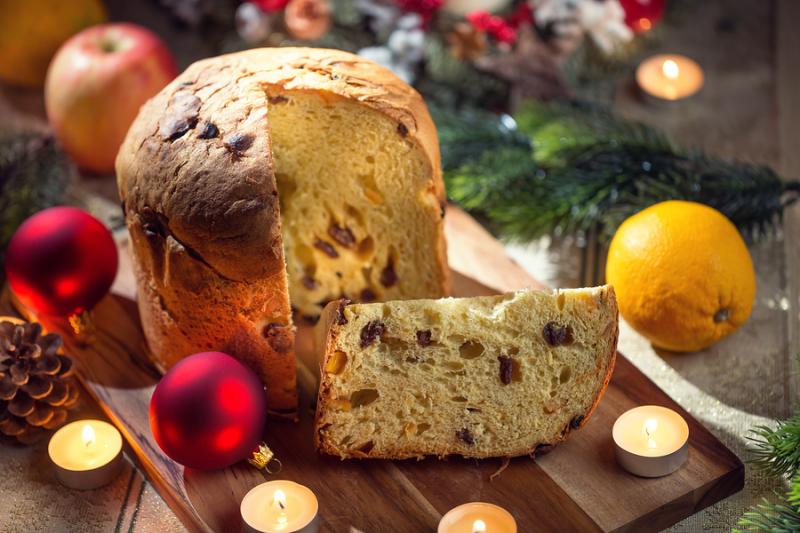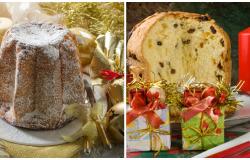Panettone: Where and How It Originated
ITA:

Use player to listen to Italian version
Panettone, Italy’s signature Christmas cake, is enjoyed throughout Italy and is popular even abroad.
Panettone hails from Milan and its origins are shrouded in legend.
The most popular legend associated with Panettone takes place in the 15th century at the court of Ludovico Il Moro at Christmas time. The court’s chef was tasked with preparing a sumptuous Christmas dinner for the local nobility. However, he forgot the dessert in the oven, causing it to burn.
Desperate, he didn’t know what to do, when one of his helpers, Toni, came up with a solution. He said that in the morning he had prepared a dessert with what was left in the pantry - some flour, butter, eggs, citron zest and raisins. The chef was welcome to use it. Hesitant, the chef brought the dessert to the table and spied on the guests’ reaction from behind a curtain.
Everyone loved the cake and when Ludovico il moro asked for the name of it, the chef said, “L'è 'l pan del Toni,” meaning “It’s Toni’s bread, hence the name panettone.
Panettone has a domed shape, with a soft and airy interior beneath a dark exterior. The cake dough requires several hours to make because it must be cured in a way similar to sourdough, rising and falling three times before being baked. Traditionally, it contains candied orange, citron, and lemon zest, as well as raisins.
In the past few years, the market demand for artisanal panettone has increased sharply. Obviously much more expensive than the supermarket version, artisanal panettone must contain flour, sugar, super fresh egg yolks (at least 4% of the total), butter (no less than 16%), raisins and candied citrus peel (no less than 20%), natural yeast made of sour dough and salt.
Il panettone, il dolce natalizio italiano per eccellenza, è apprezzato in tutta Italia e famoso persino all'estero.
Le sue origini sono milanesi e per lo più avvolte nella leggenda.
Quella più popolare ha luogo nel 15° secolo alla corte di Ludovico Il Moro durante il periodo natalizio. Lo chef di corte era stato incaricato di preparare una sontuosa cena di Natale per la nobiltà locale. Tuttavia, si dimenticò il dessert nel forno, facendolo bruciare.
Disperato, non sapeva cosa fare, quando uno dei suoi aiutanti, Toni, trovò una soluzione. Disse che al mattino aveva preparato un dolce con ciò che era rimasto nella dispensa - un po' di farina, burro, uova, scorza di cedro e uvetta. Lo chef, se gradiva, poteva usarlo. Esitante, lo chef portò il dessert in tavola e spiò la reazione dei commensali da dietro una tenda.
Tutti ne furono entusiasti e quando Ludovico il Moro chiese il nome del dolce, lo chef disse: “L'è il pan del Toni”, che significa “È il pane fatto da Toni,” da cui il nome panettone.
Il panettone ha una forma a cupola, ha una parte esterna scura e un interno morbido e pieno d’aria. La preparazione richiede diverse ore in quanto deve essere lavorato in modo simile alla pasta madre; viene infatti impastato e fatto lievitare tre volte prima di essere infornato. Tradizionalmente, contiene arancia candita, scorze di cedro e limone, nonché uva passa.
Negli ultimi anni, la richiesta di panettone artigianale è aumentata notevolmente. Molto più costoso rispetto al panettone del supermercato, il panettone artigianale deve contenere farina, zucchero, tuorli d'uovo molto freschi (almeno il 4% del totale), burro (non meno del 16%), uvetta e scorze di agrumi candite (non meno del 20 %), lievito naturale a base di pasta acida e sale.










